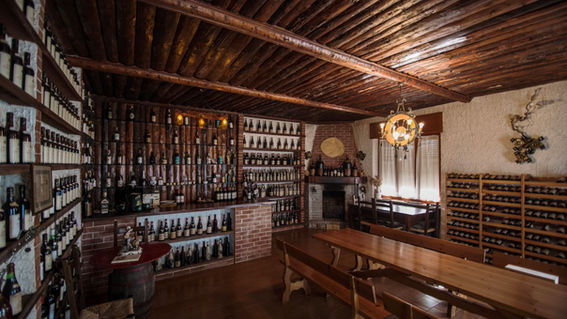
Grimaldi
Piemonte

About the Winery
For four generations, the Grimaldi family have been tending the best vineyards in the Langhe and Roero, bottling the most prestigious appellations of the area. Over more than a century of working in the vineyards, in close contact with the soil and the vines, the Grimaldis have learned to recognize the most suitable areas for each type of vine, knowledge that they have used by planting the best varieties for the soil, altitude, micro-climate and orientation. Today the wine company of Diano D'Alba produces a wide range of typical wines, a direct expression of the extraordinary variety of grapes and the unique terroir, recognized by UNESCO as a World Heritage site. The history of the Grimaldis goes back to its country roots in the Langhe, in Valle Talloria, at the beginning of the 19th century, when fields of wheat grew between the rows of vines and every farmhouse had, next to the winery, a barn in which were bred the prestigious Fassona Piemontese cattle. Grandfather Giuseppe cultivated excellent dolcetto grapes, the main variety of the Diano d'Alba area. After harvesting them he would load them on to a cart and take them to Aldolcetto market, where they would be purchased by the winemakers.
Piemonte
Piedmont has fostered a serious winemaking tradition since the Middle Ages. Early references to Nebbiolo wine were documented in the castle of Rivoli in 1266 and in the village of Canale in the Roero in 1303. The region's most prized grape was also highlighted in a book of statutes in the village of La Morra in 1431, wherein a five-lire fine was imposed on anyone who cut Nebbiolo vines. Piedmont is Italy's second largest geographical region and the country's seventh largest wine-producing region. Approximately 45,000 hectares of Piedmont's 25,399 square kilometers are under vine. Piemontese wine makes up 5 percent of Italy's national production and almost 18 percent of the country's total exports. Most of the region's wine comes from small vineyards in which the growers also make the wine. In Barolo and Barbaresco, the region's most revered winemaking areas, the average vineyard is only about five acres with an output of approximately 10,000 bottles a year. Situated in the northwest, Piedmont shares borders with France and Switzerland. The region's Italian name, Piemonte, translates to foot of the mountains, which is a fitting descriptor for its subalpine location and the fact that it's surrounded by mountains on three sides - the Alps in the north and west and the Apennines in the south. The mountains create a protective barrier around Piedmont and the sub-alpine foothills offer many sunny slopes for planting the region's most-prized grape. While the sunniest aspects tend to be reserved for Nebbiolo, nearly all of the vineyards in Piedmont are planted on hills ranging in elevation from 150 to 450 meters above sea level. Very few (less than 5 percent) are officially classified as flat. The coolest sites are usually planted with Dolcetto, except in the hills southeast of Asti, where cooler vineyards are reserved for Moscato. Variations in soil composition, altitude, and aspect combined with the sub-mountainous landscape contribute to a range of mesoclimates throughout the region. source: SevenFiftyDaily

Vineyard(s)
Ratings & Reviews
Title | Item | Vintage | Publication | Score | Review |
|---|---|---|---|---|---|
Grimaldi | Barbaresco 'Manzola' 2020 | 2020 | 93 | Full, lightly gripping, tart and dry with notes of cherry, hibiscus, red and pink rose and vanilla bean. | |
Grimaldi | Nebbiolo d'Alba 2020 | 2020 | 89 | ||
Grimaldi | Barbaresco 'Manzola' 2019 | 2019 | 89 | The Grimaldi Luigino 2019 Barbaresco Manzola is a tight and lean-bodied Nebbiolo that reveals a streamlined style. It starts off slowly and grows gradually to encompass dried cherry, raspberry, blue flower and dry earth. The Manzola vineyard is located in Treiso, and you can count on elegant tannins and structure, especially in a balanced vintage such as this. You get a hint of sourness as well. | |
Grimaldi | Barbaresco 'Manzola' 2019 | 2019 | 93 | I have little experience with this producer, but hope to change that during my next visit to the regions around Alba. This is exemplary Barbaresco from the Manzola Cru, showing a wonderful mix of sweet-seeming ripe, mostly red fruit notes recalling dried cherries and wild strawberries along with subtle spice notes and prominent savory undertones. There’s a lot of grippy tannins in the wine, but the strong streak of sweetness easily counterbalances them, and it also balances out a pleasant little bite of bitterness in the finish. Already terrific with food (as simple as a nice cheese or a roast chicken), this could nevertheless be cellared to its advantage for at least five years. This is terrific for $42. |


















